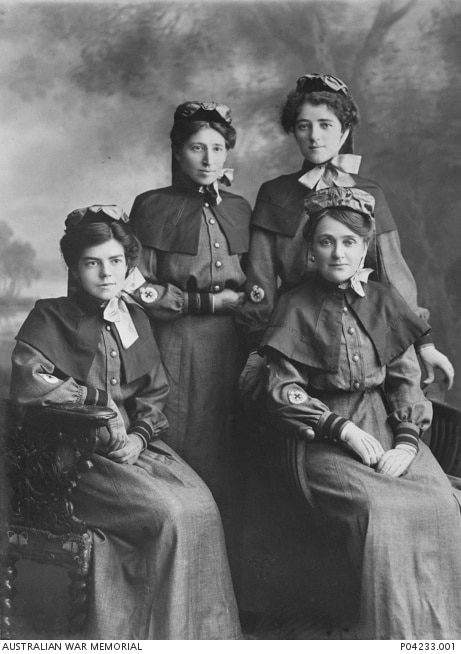
World War I Head Sister Constance Mabel Keys has been remembered for her highly decorated military service with Keys Street, Avenell Heights badged in her honour.
Keys Street was named after the Keys Family, an old and respected Bundaberg family, on 11 November 1976.
It now displays the rising sun badge of the Australian Army as part of Bundaberg Regional Council’s Streets of Remembrance program.
World War I service
Constance Mabel Keys was born in Mount Perry on 30 October 1886, the second child of James and Margaret Keys.
A qualified nurse who trained at Brisbane General Hospital, Constance enlisted in the Australian Army Nursing Service on 21 September 1914, aged 27 years.
Constance was one of the first Queensland nurses selected for the Australian Army and on enlistment she embarked overseas on the troopship HMAT Omrah.

In transit, the convoy encountered the German ship SMS Emden which the Australian ship HMAS Sydney engaged in battle, damaging it badly.
Survivors from the stricken SMS Emden were taken on board HMAT Omrah where Constance and other nurses cared for those injured until they were transferred to HMS Hampshire.
On arrival in Egypt, she was appointed to the 1st Australian General Hospital, treating casualties from the Gallipoli campaign.
Constance was posted to military hospitals and stations in Egypt, England and France, often serving in the field, as well as undertaking nursing duties on the troopship HMAT Themistocles carrying Gallipoli casualties back to Australia.
She rose to the rank of Head Sister and became one of the most highly decorated nurses in the Australian Army Nursing Service of this time.
She received the Royal Red Cross Second Class in July 1917 for conspicuous services rendered to Armies in the field, and the Royal Red Cross First Class in October 1919 in recognition of her valuable services with the Armies in France and Flanders.
In 1919, Constance was awarded the French Medaille Des Epidemies, Gold, by the President of the French Republic.
She was Mentioned in Despatches twice; in 1916 for distinguished services rendered during the period of General A.J. Murray’s Command of the Egyptian Expeditionary Force, and later in 1918 in Sir Douglas Haig’s despatch for conspicuous services.
Constance was also awarded the 1914/15 Star, the British War Medal and the Victory Medal.
Later life
Constance was released from military service on 17 February 1920 and returned to live with her family in the Brisbane suburb of Norman Park.
She became matron of a hospital for returned soldiers where she met Gallipoli and Cape Helles veteran Lionel Kemp-Pennefather, who many years earlier had been part of the same convoy of ships that embarked from Australia as Constance had been.
Constance and Lionel married in December 1921 and had a son, James and a daughter, Margaret (Thorsborne) who rose to prominence as a conservationist and environmental activist.
Constance passed away on 17 March 1964.
An extensive collection of her photographs, papers and memorabilia from the war years is now part of the State Library of Queensland Collection.
Her daughter Margaret recorded a moving digital story of her parents life and service for the library’s QANZAC100 Century of Service project.
Information about Head Sister Constance Keys’ life and service is from the National Archives of Australia, Australian War Memorial, Australian Dictionary of Biography and State Library of Queensland.





